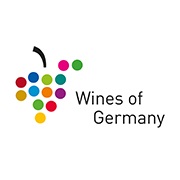
There are few wines that excite the sommelier community like German Riesling. In the last few decades, German winemakers have focused on producing dry and off-dry Rieslings with outstanding acidity that have taken the wine world by storm.
These drier Rieslings – along with sophisticated and terroir-driven sweet Rieslings – caught the attention of wine enthusiasts across the globe. One, renegade sommelier Paul Grieco of NYC wine bar Terroir, even spearheaded a “Summer of Riesling” campaign. Beginning in 2008, Grieco filled Terroir’s entire white-wine-by-the-glass menu with his favorite German grape, giving his guests the chance to taste the full spectrum of Riesling. In the years since, sommeliers around the country have joined his efforts, making their Riesling-dominated wine lists a point of pride. At the same time, somms looking for exceptional pairings recognize Riesling’s versatility and ability to align with everything from fresh seafood to spicy Thai dishes to, yes, schnitzel.
Recently, pioneering oenophiles have become intrigued by other German grapes, including Silvaner, Müller-Thurgau, Grauburgunder (German for Pinot Blanc) and Spätburgunder (Pinot Noir). While these don’t get as much attention as the star of German wines, Riesling, they can offer something entirely different and spectacular in the hands of serious producers.
We asked some of the top sommeliers and industry insiders in the U.S. why and when they reach for German wine. Here’s what they had to say:
“I love German Riesling. It’s just perfect. The best versions have a ton of acid and an intense purity of fruit. Because it’s typically low in alcohol, you can drink a whole bottle and still form a sentence. It’s the liquid version of an invigorating, early-morning breath of fresh air. If you’re looking to expand further into German wines, check out Silvaner, a spicy, smoky white varietal, and sekt (German sparkling wine), which seems to have gotten better lately. We’re also seeing more and more high-quality Spätburgunder (German Pinot Noir) on the market thanks to global warming. Over the past few decades it has become increasingly easier for Pinot Noir grapes to reach a minimum ripeness level.” – Jessie Birschbach, Certified Sommelier, Managing Editor of The SOMM Journal (Los Angeles, CA)
“Scheurebe is one of my favorite ‘other’ grapes of Germany. It’s a cross between Silvaner and Riesling. It can have aromas of bleu cheese and ripe fruit at the same time. I like the sparkling versions – check out the Bruder Dr. Becker Scheurebe Sekt from the Rheinhessen.” – Rafael Sanchez, Sommelier and Director of Wine and Beverage, Addison (San Diego, CA)
“The variety of German Riesling means there’s one for each season. There are many styles, from sparkling to bone dry to sweet. A bracing trocken style is perfect on a summer day, while an aged auslese is great on a cold evening by the fire. No matter the style, there is an inherent balance that the Riesling grape can offer by being naturally high in acidity. The wine’s fruit flavors with its secondary notes – whether they are floral, mineral, or herbal – are an additional source of complexity and balance.” – Andrew Fortgang, Co-Owner and Wine Director, Le Pigeon and Canard (Portland, OR)
“At Maxwell Park, we’ve had a lot of success with Silvaner, Scheurebe, Spätburgunder Weissherbst (Pinot Noir that varies from white to rosé), and Bacchus in addition to all the great Riesling.” – Brent Kroll, Proprietor and Sommelier, Maxwell Park (Washington, DC)
“The popularity of Riesling increases with every day. No longer are only sommeliers and wine nerds asking for it, but a vast demographic of people who have had great experiences with its versatility. But people should also get to know the Scheurebe grape, specifically from the producer Müller-Catoir. Their wines have depth, complexity, and are enjoyable both when young and with age. During the holidays, I love serving and drinking sekt; it’s the perfect supplement to Champagne with its own unique characteristics and it’s almost always a solid value. Producers such as Diel and Peter Lauer are killing it right now.” – Ryan Bailey, Wine Director, NoMad (Los Angeles, CA)
“I’m constantly surprised by Riesling’s ability to adapt and pair with a multitude of dishes. I attribute it to the grape’s crispness, minerality, and intrigue. Pairing Riesling with a spicy dish is a slam dunk. Just last night, I tried a Kabinett Riesling and a red California Rhone blend with spicy Thai-inspired lamb noodles. While the Rhone blend was an easy and more obvious pairing, the Kabinett was the wine that stole the show. The Strub Niersteiner Brückchen Herzstück Riesling Kabinett reinvigorated my palate between each bite with bright zip and all-around freshness.” – Jared Hooper, Sommelier and Wine Director, Faith & Flower (Los Angeles, CA)
“German wines have evolved to create a dryer style of Riesling; we’re seeing more trocken and GG (grosses gewächs), both dry styles, on the market. At Per Se, we like to pair Riesling with lobster or dishes that have ginger and coconut.” – Michel Couvreux, Beverage Director, TAK Room and Per Se (New York, NY)
“Riesling is quite popular, but you also need German Müller-Thurgau and Silvaner in your life. A spicier, weightier Müller-Thurgau would be amazing in cooler parts of the year. I also really love Pinot Noir from Germany. There’s great phenolic ripeness in a lot of German Pinot Noirs, and they’re typically fragrant with lively fruit and juicy acidity.” – Liz Martinez, Sommelier and Wine Director, Prime + Proper (Detroit, MI)
“Some of my favorite [lesser-known German grapes] are Kerner, Silvaner, Scheurebe and Elbling. Kerner is my go-to sushi wine, but [it also has the ability to pair with something more substantial], like roast chicken. As for Silvaner, it goes with any leafy salads and grilled flaky fish. Scheurebe’s my go to for lamb curry, duck breast, or even snacking with hummus and pita chips. And Elbing is a great alternative to Muscadet, so pair it with anything shellfish.” – Brooke Sabel, Wine Director, Gary’s Wine & Marketplace (Madison, NJ)
“Silvaner, Scheurebe, and Grauburgunder are all incredibly food-friendly. We just debuted our fall tasting menu and a bottle of any of these could get a diner through the eight-course meal. There’s a pork dish that incorporates the fruits of a fall orchard, with peaches, plums, and nectarines that I usually suggest with a medium-bodied, fruit-forward red but it would be beautiful alongside a rich German Grauburgunder. We also have a lot of local New England seafood on the menu, and a Scheurebe is one of those bright, angular whites that goes perfect with all kinds of shellfish.” – Katey Walker, Wine Director, The Essex (Essex, CT)
This article is sponsored by Wines of Germany.


